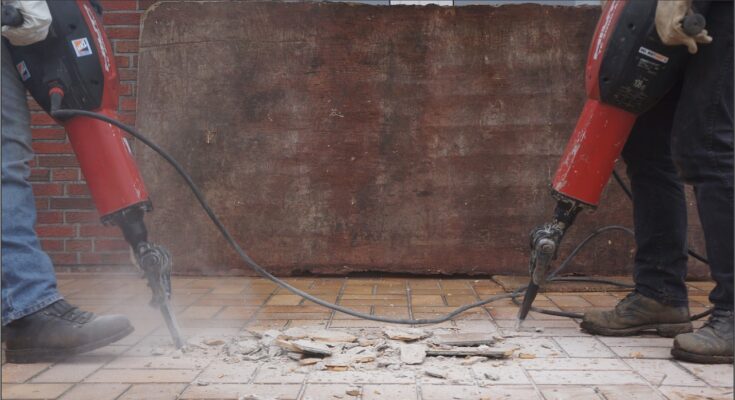The magnitude of commercial concrete removal projects can be overwhelming at first glance. For the uninitiated, the intricacies of tearing up solid foundations or expansive commercial paving can seem like a labyrinth of challenges. Concrete removal is more than just the brute force of breaking or the logistics of clean-up; it’s a symphony of precision, safety, and foresight.
Tailoring the Method to the Project
Not all concrete removal projects are the same. A one-size-fits-all approach is rarely appropriate for the diverse range of commercial concrete structures.
Demolition Methods and Their Considerations
Various techniques exist, from traditional methods like wrecking balls and cutting torches to modern technologies such as diamond wire cutting or expansive grout. Each method has its benefits and limitations, and the specific project requirements will dictate the most appropriate choice.
Optimal Timing and Coordination
Coordinating the concrete removal process with other construction tasks is vital. Concrete removal is often a preliminary step in a larger project, so aligning these activities optimizes workflow and reduces downtime.
Safety Protocols and Compliance
Safety should be at the forefront of any demolition plan. Ensuring the welfare of workers and the public involves compliance with all relevant safety regulations, appropriate training, and the provision of protective equipment.
Navigating the Actual Removal
With the method selected, the commercial concrete removal process can begin, requiring operational precision and constant monitoring.
Execution Phase and Best Practices
The execution is where the chosen method, equipment, and team must work seamlessly. This section details the best practices for the specific method employed, including machine operation and equipment maintenance.
Emergency Response and Contingency Planning
Despite meticulous preparation, unexpected circumstances can arise. A solid contingency plan, such as identifying emergency exits, medical facilities, and communication protocols, is crucial.
Community and Stakeholder Relations
Constructions often impact the surrounding community and stakeholders. Keeping lines of communication open and having a well-thought-out community relations strategy can mitigate tensions and alleviate concerns.
The Art of Clean-Up and Disposal
Arguably one of the most significant phases, clean-up and disposal require as much attention as the demolition itself.
Debris Management
Managing the large volume of debris generated from concrete removal is a logistical challenge. It involves efficient removal methods, recycling initiatives, and the responsible disposal of any hazardous materials.
Documentation and Record-Keeping
Proper documentation is necessary for both legal and future project planning purposes. Detailed records of the removal process, including any environmental testing, can provide valuable insights for similar projects and serve as a precautionary measure against any potential disputes or liabilities.
Post-Removal Preparations and Considerations
Even after the concrete is removed, there is still work to be done in preparing for the next steps.
Preparing for the Next Construction Phase
The removed concrete is a canvas for the next phase of construction. Ensuring the site is cleared effectively, setting the correct grade and compaction, and any additional preparatory work are part of this bridge between demolition and new building.
Asset Recovery and Salvage
Depending on the condition of the concrete, there might be potential for salvageable materials. This has not only environmental but also financial benefits, reducing waste and potentially recouping some of the demolition costs.
Inspection and Quality Assurance
A final inspection of the site and the removed concrete ensures that everything has been executed according to regulations, practices, and requirements. It’s a detailed check to avoid any non-compliance or oversights that might cause issues in the future.
By breaking down the often daunting task of removing commercial concrete, individuals and project teams can approach the process with a comprehensive plan that supports safety, efficiency, and environmental responsibility. It’s through this methodical approach that what once seemed like an impenetrable barrier can become a doorway to progress and transformation.

















